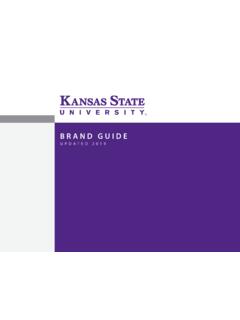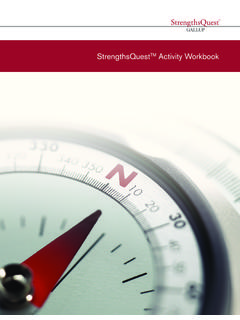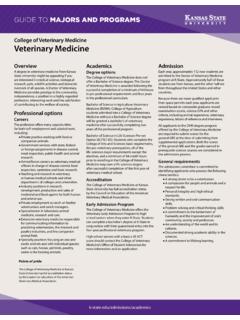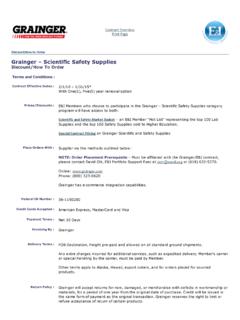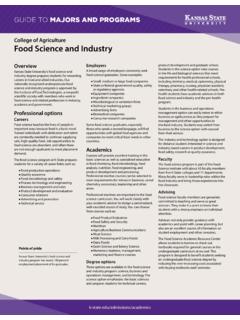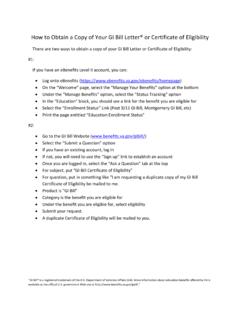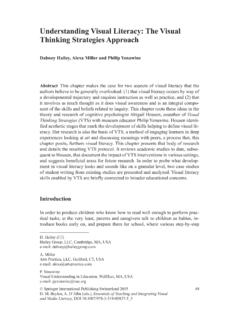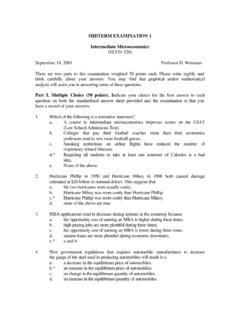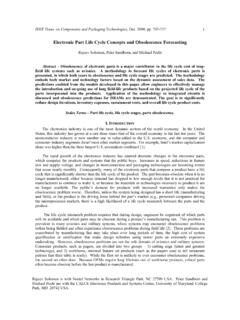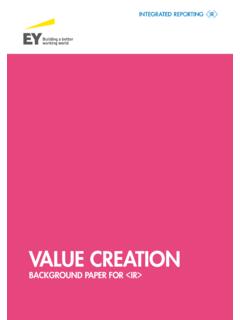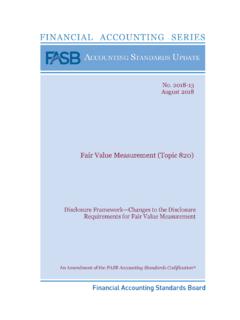Transcription of Internal Control Concepts and Applications
1 Internal ControlConcepts and Applications Kansas State UniversityInternal AuditInternal Audit Office214 Anderson HallPhone 2-7308 Steve LaFever, MSA, CPA, Director, Phone: 2-5460 Smith, CIA, Senior Internal Auditor, Phone 2-5413, Clark, MBA, CIA, Internal Auditor, 2-6746, Our mission is to serve the University by providing independent assurance and consulting services to add value , strengthen Internal controls, improve compliance with Federal, State, Kansas Board of Regents, and University rules and regulations and improve and Vision Internal Audit provides value - added audit and advisory services with objectivity, transparency.
2 And independence using the Institute of Internal Auditors professional and ethical standards as guidance. We develop our staff through continuous training to provide management with expert service to improve operations and provide value - added change with utmost integrity. Audit ProcessAudit SelectionThe Annual Audit Plan is prepared using a University risk assessment and requests from University administrators including Vice Presidents, Deans and Directors. Audit ProcessReview of Internal Controls and Testing During the review of Internal controls and tests of transactions phase of the audit, the auditor meets with staff and management to understand the unit's procedures and Internal controls.
3 The auditor identifies controls that reduce risk, as well as any missing controls. The auditor tests a sample of transactions, with emphasis placed on higher risk items, to verify that controls are functioning as intended, or determine where improvements are of revenues and expenditures typically include tests of revenues, accounts receivable, purchases, business procurement card purchases, inventory, property, travel, and Process-Draft Report The auditor-in-charge meets informally with management to discuss probable report observations to ensure the recommendations are feasible.
4 The report is drafted and sent to management for review prior to discussion at the exit conference. At the exit conference, it is agreed with management that responses with action plans and an implementation date are expected to be submitted to Internal Audit within 30 days. The Vice President for Administration and Finance may approve extensions given extenuating circumstances. The University President will be informed if a timely management response is not received. Final Report The final report reflects changes discussed at the exit conference as well as management's action plan.
5 The report is addressed to administrators including the Department Head, Director, Dean, Vice President for Administration and Finance and other appropriate personnel. If fraud or material financial weaknesses are found, the final audit report is sent to the Kansas Board of Regents in compliance with the Kansas Board of Regents Policy. Follow-up Review After audit recommendations are scheduled to be implemented, Internal Audit will follow-up with management to determine whether the recommendations were successfully implemented. To perform the follow-up, the auditor inquires about progress in implementing the recommendation and reviews a limited sample of transactions related to the is Internal Control ?
6 Internal Control refers to the processes and procedures used to provide a reasonable level of assurance that goals and objectives will be achieved. They include anything which serves to safeguard university assets or to improve the effectiveness and efficiency of operations. In general terms, Internal controls are simply good business practices. It is important to remember that implementing Internal controls is a continuous process requiring everyone s attention to ensure goals and objectives are Internal Control ShieldLevels of ControlsFive Types of Internal Controls Preventivecontrols, the first line of defense, are designed to keep errors and irregularities from occurring in the first place - stops something from happening.
7 Detectivecontrols are designed to detect errors or irregularities that may have occurred -finds out what happened, alerts you as it happens or shortly after. Correctivecontrols are designed to correct errors or irregularities that have been detected follow detective controls, recovery from consequences of an error or unexpected event. Directivecontrols are those designed to establish the desired outcomes tells you what should happen. Compensatingcontrols are those used to compensate for controls that are otherwise lacking. Generally, close supervision is used to compensate for lack of separation of ControlsPreventive Controls Examples.
8 Segregation of duties, remember the ARC (separates Accountability (or Authorization) from Reconciliation, from Custody (of asset). No person should perform more than one function. Physical controls over assets Authorized signers University payables review and approval of travel vouchers prior to processing Reminders of policies, procedures, and expectationsDetective ControlsDetective Control examples: Account reconciliations Management review of reconciliations Physical inventories P-Card logging, reconciliation, and approval Review of budget to actual Year to year expenditure trendingCorrective ControlsCorrective Control examples.)
9 Error communication and reporting Systems Documentation or processes Improvement initiativesDirective ControlsDirective controls: Kansas State University Policies and Procedures Manual Kansas Board of Regents Policy and Procedures College policies Unit proceduresWho is Responsible for Internal Control ? PPM 3210 Everyone within the University has some role in Internal controls. The roles vary depending upon the level of responsibility and the nature of involvement by the individual. The Kansas Board of Regents, President and senior executives establish the presence of integrity, ethics, competence and a positive Control environment.
10 The directors and department heads have oversight responsibility for Internal controls within their units. Managers and supervisory personnel are responsible for executing Control policies and procedures at the detail level within their specific unit. Each individual within a unit is to be cognizant of proper Internal Control procedures associated with their specific job of Internal ControlManagement ResponsibilityThe establishment and maintenance of a system of Internal Control is the responsibility of Assurance The cost of achieving the objectives of Internal Control should not outweigh its of Data Processing The techniques of achieving the objectives will vary with different types of of Internal Internal Control consists of five interrelated components.
